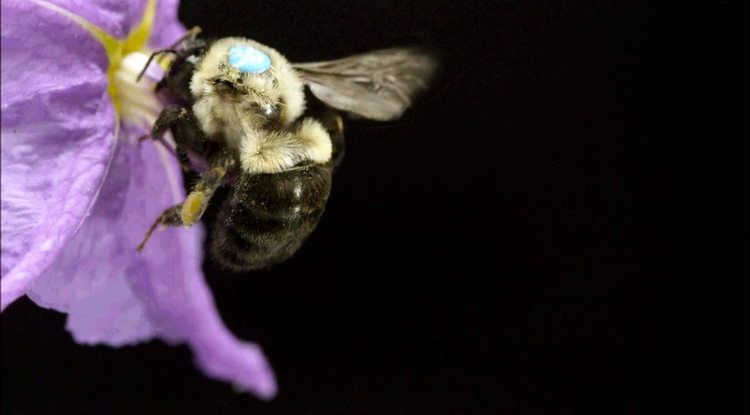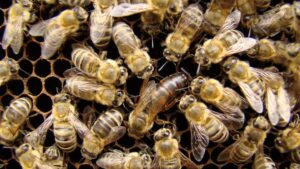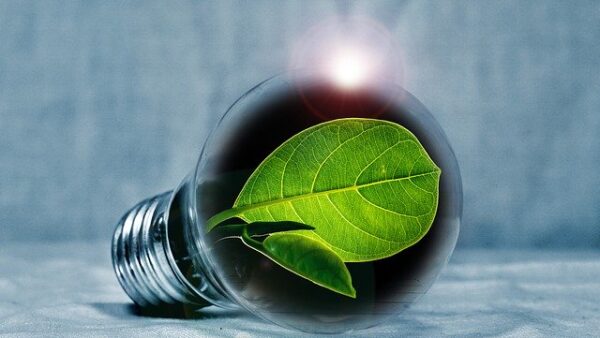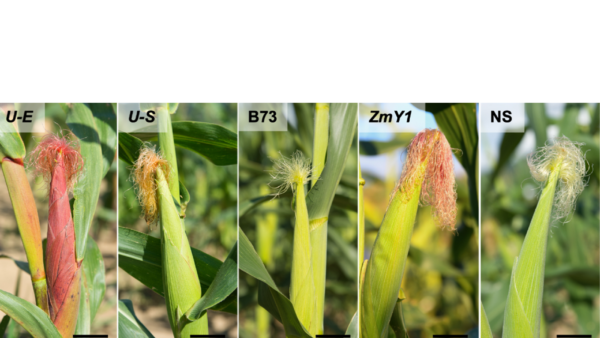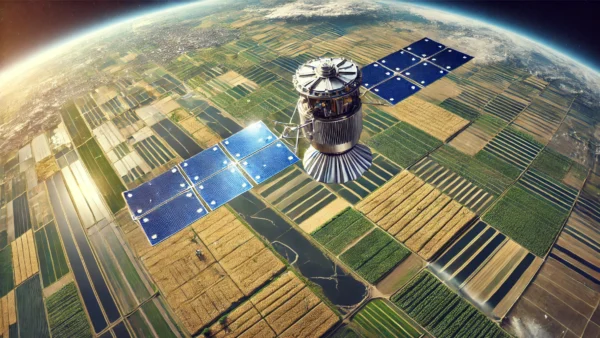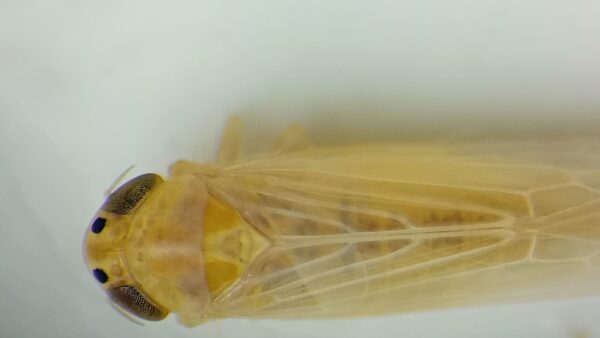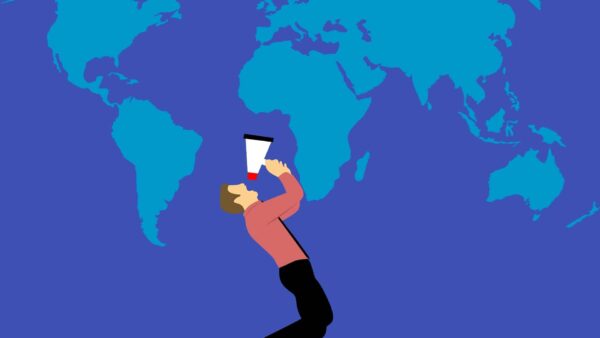Avery Russell gently holds a bumblebee between his index finger and thumb. The bumblebee has a tiny mustache, which means it’s a male. That, in turn, means it has no stinger.
Russell graciously offers a visitor the chance to hold it, too, so that she can feel the startlingly high frequency with which it vibrates its thorax. He then encourages her to take a whiff of the little bee.
“Bumblebees smell great,” Russell says.
And they do. Or at least this one does. Its fragrance is subtle, sweet and clean.
Russell is a student in the Graduate Interdisciplinary Program in Entomology and Insect Science at the University of Arizona, and he works in the lab of Daniel Papaj, professor of ecology and evolutionary biology. Russell studies the evolutionary relationship between bumblebees and flowers — that is, how bumblebees’ foraging preferences drive the evolution of flowers and how these partners maintain their mutually beneficial relationship.
Bees are concerned with two types of food: pollen and nectar.
“Nectar serves as a carbohydrate source, so it’s a bit like an energy drink, but you can’t survive on just carbs,” Russell says. “You need protein, and pollen is a protein source. That’s the stuff they’re feeding to their babies but also using to maintain their muscles.”
Yet, little research has been done on pollen foraging over the last 100 years.
“We know a lot about nectar foraging behavior in bees and other pollinators,” Russell says. For instance, researchers know that bees and other pollinators must learn how to collect nectar from flowers. What’s more, many flowers conceal their nectar rewards, so bees have to spend a lot of time learning how to extract concealed nectar.
Researchers also know a lot about the types of cues flowers present when it comes to signaling the availability of nectar rewards. Bees learn to recognize visual, olfactory, tactile and even electrical cues connected to the presence of nectar, Russell says.
“But we don’t really know much about how bees forage for pollen — specifically, whether that behavior is learned and what cues bees learn in association with flowers,” Russell says. “Pollen is the male gamete of the flower, so it’s important for flower reproduction, but it’s also important for bee and pollinator reproduction.”
https://www.youtube.com/watch?time_continue=90&v=9hQ5Dk_Tz0s
Such a mutually beneficial relationship between two species of organisms is known as mutualism, a “tenuous relationship” when it comes to plants and bees, Russell says.
That’s because flowers and bees are continuously trying to exploit their partners. That is, plants need pollen transferred from one individual to another individual of the same species so they can produce fruit and thus more plants. Meanwhile, bees need to collect pollen or nectar to feed themselves and their larvae.
“But if you’re a plant, anthropomorphically speaking, how do you prevent another pollinator from removing more pollen than would benefit you?” Russell asks. “One way is to conceal your rewards or to restrict the rewards.”
For example, nectar-producing flowers have structures that hold the nectar within a cavity, or a nectary. The pollinator probes that nectary, gets a little pollen on itself, and then transfers that pollen to other plants.
But to make up for flowers’ structural defense mechanisms, bees deploy a variety of mighty pollen-gathering behaviors. One is known as scrabbling, pulling pollen off flowers’ anthers, smearing copious amounts of it onto their bodies, packing it into their legs’ corbicula, or pollen baskets, and flying off with it.
Or there’s this: About 6 percent of flowers, Russell says, hold their pollen within a tubelike anther or a tubelike petal, which forces the bee to vibrate their thorax and wing muscles, in order to jar the pollen out of the tube.
“That’s what we call buzz-pollination behavior or sonication behavior,” Russell says. “Because the plant is using that specific type of morphology, only bees that can sonicate can access the pollen and pollinate the plant. So we might think of it as this tight co-evolution between the plant and pollinator.”
Or we might not. Russell says his latest research may contradict that notion.
“After all, we’re just scratching the surface when it comes to pollinators interacting with plants,” he says.


